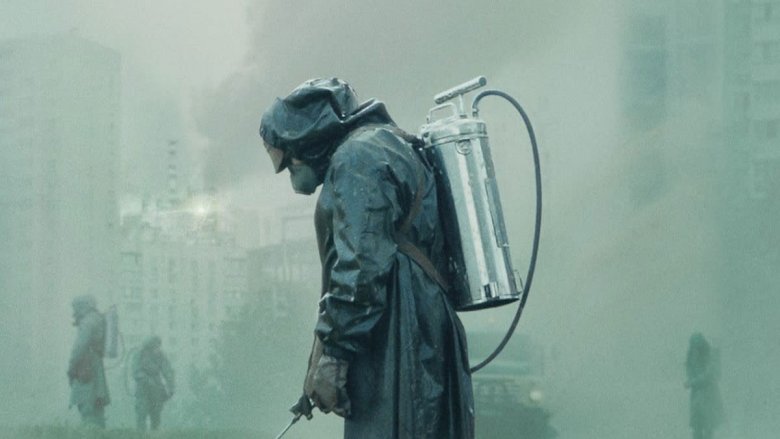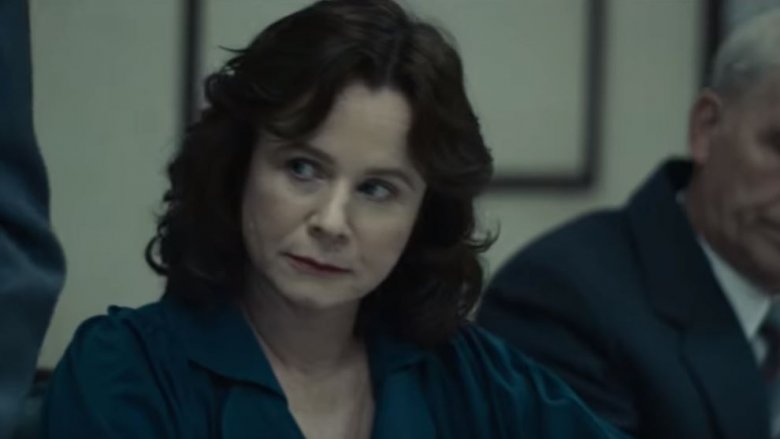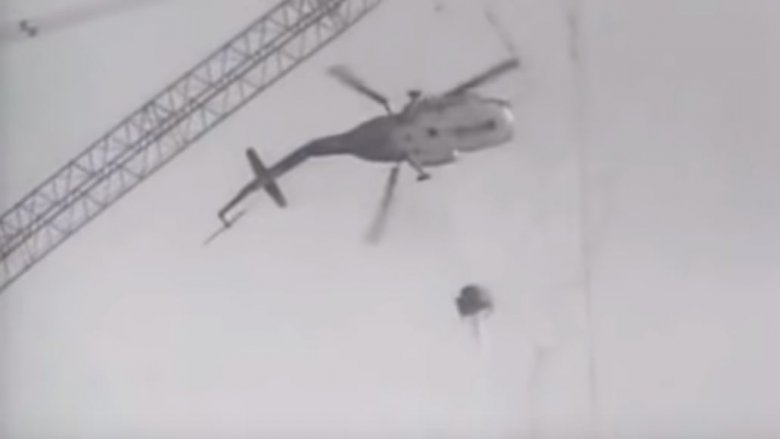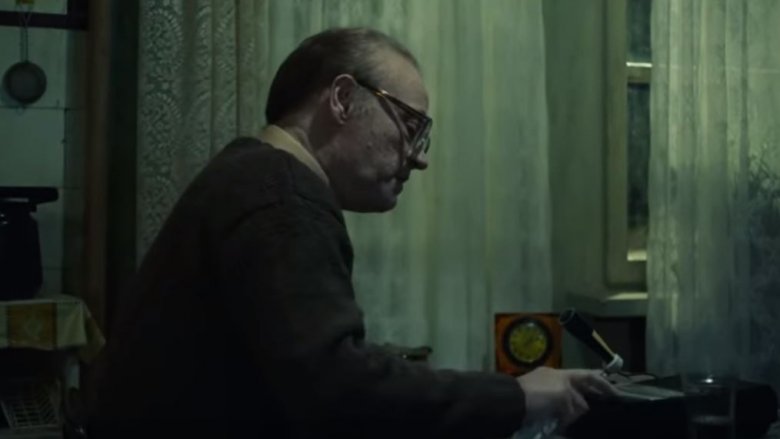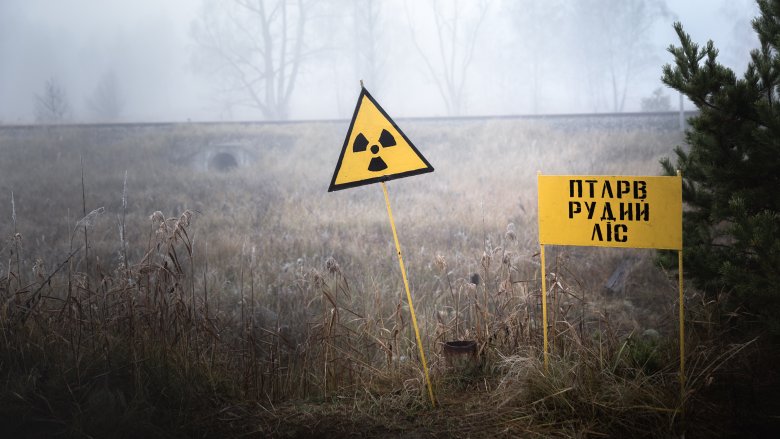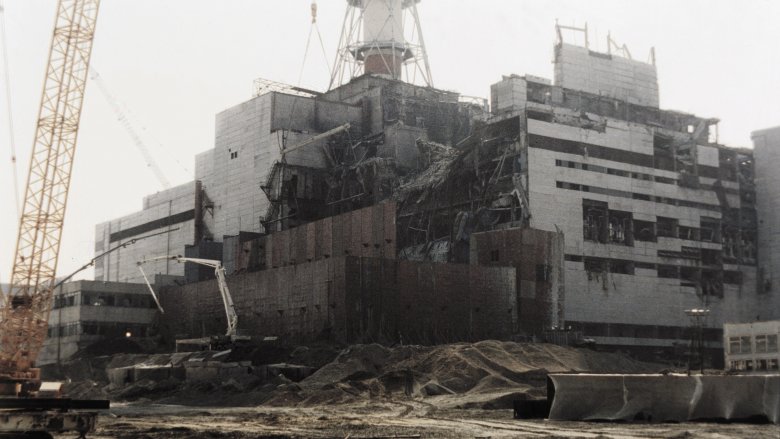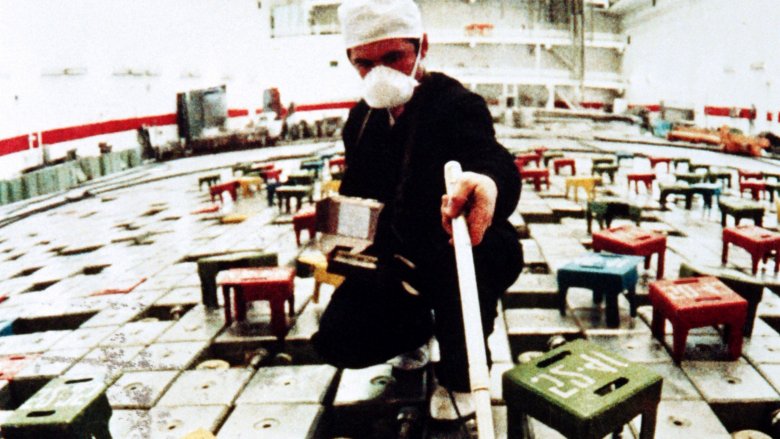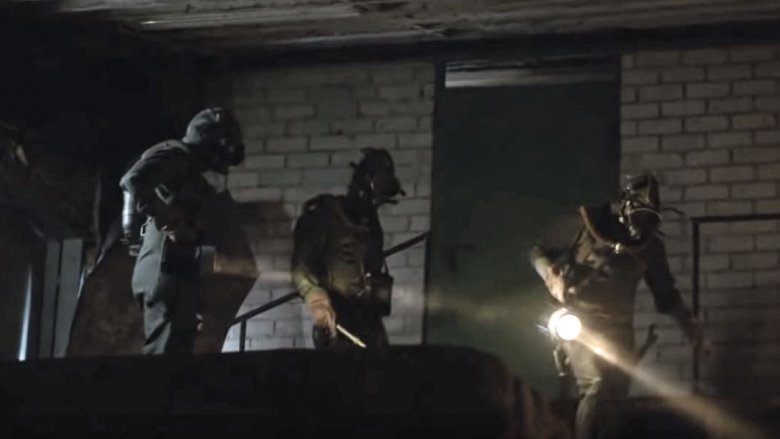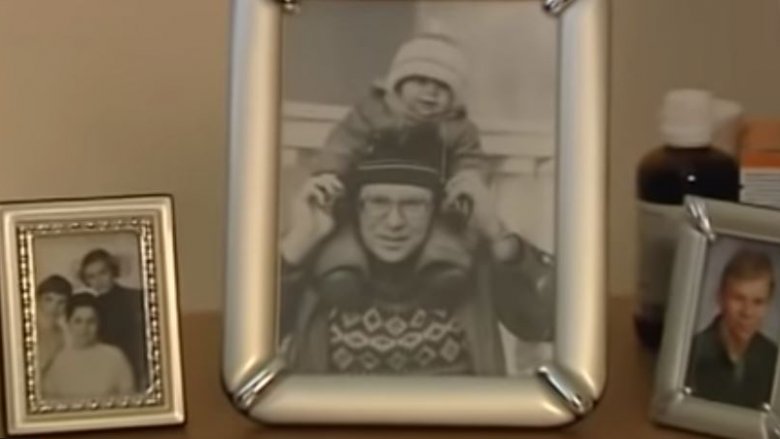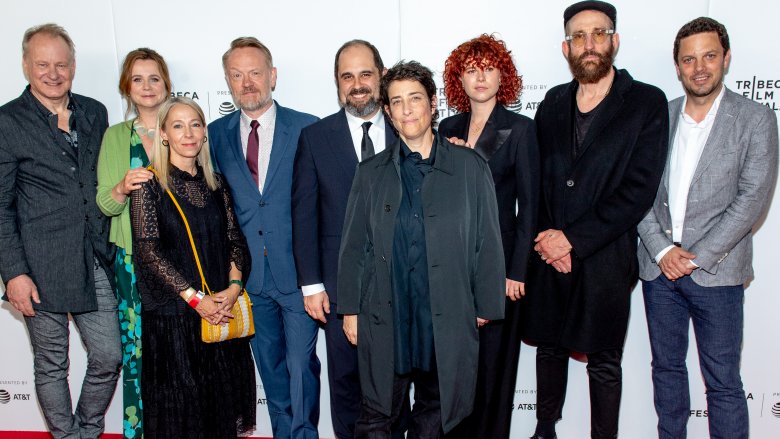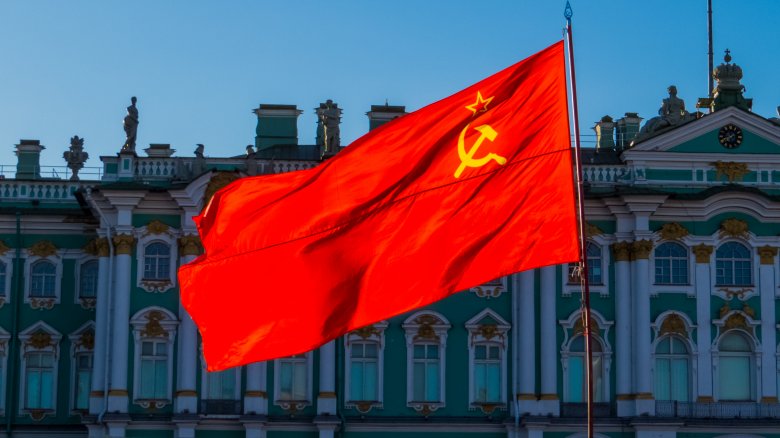Times The Chernobyl Miniseries Lied To You
Dragons are exciting, and zombies are scary, but in the past few years, nothing has traumatized viewers on the same level as HBO's stunning Chernobyl. With an exceptional cast and an unflinching dedication to showing the brutal realities of nuclear radiation, the miniseries not only presents a chilling real-life catastrophe from the past but also serves as a tense warning for the real cloud of lies, bureaucracy, and corruption that continues to create many potentially disastrous futures for the human race.
Unlike so many "based on a true story" adaptations out there, the show takes extreme care to accurately depict the horrific events at the Chernobyl nuclear power plant in 1986. In the last episode, the show even explains the creative liberties it did take, for which it deserves serious credit. However, considering that the entire series is premised on the importance of truth, it's only right to assess places where Chernobyl's narrative required corners to be cut, people changed, and events shuffled out of order.
Ulana Khomyuk is a fictional character
Chernobyl's most clear-cut hero is Ulana Khomyuk, a nuclear physicist played by Emily Watson, who repeatedly risks life and limb to ensure that the true dangers of nuclear radiation and corruption get uncovered. She's a great character, but as Bustle points out, she never existed. For storytelling reasons, the fictional Khomyuk is weaved through real events so Valery Legasov has another likable character to bounce science talk off of, rather than a whole crew of nameless scientists. However, Ulana wasn't inserted into the series just to move the plot along. She's also a composite of the many real women who became prominent scientists and doctors in the Soviet Union.
The reason for this, Chernobyl creator Craig Mazin argues, is that the Soviet Union was actually far more progressive than the United States in elevating women in STEM fields. All the way back in the early '60s, 40 percent of all Soviet doctorate degrees in chemistry were awarded to women, a statistic that the United States never reached in the 20th century. Now, that doesn't mean women didn't face an uphill struggle if they wanted to get into powerful political positions or be, you know, listened to, but they were well-regarded as scientists and that's the reality the fictional Ulana is meant to represent.
The helicopter incident happened way later
If there's one scene in the miniseries that's impossible to forget, it's the sight of a helicopter flying over the reactor ... and then dropping in midair, killing everyone aboard. The sheer horror of the moment plays out on Legasov and Shcherbina's faces, as the two men are forced to reckon with the fact that all those men died because of an order they gave.
Yes, this really happened, and the horrendous event was even captured on film (above). However, the exact circumstances of the real-life helicopter crash were somewhat different. In the series and in real life, the accident was caused by rotor blades catching on a chain or cable, but according to Inverse, it didn't actually happen until October 1986, about five months after the explosion. As with most of Chernobyl's creative liberties, showrunner Craig Mazin has been honest about the alteration, and he explained to Men's Health that he deliberately pushed the helicopter crash earlier into the narrative as a way to visually illustrate the deadliness of an open reactor so audiences would understand what the Soviet officials were dealing with. An invisible menace like nuclear radiation is generally quite difficult to depict on film, but a collapsing helicopter definitely gets it across.
Legasov's suicide letter was a bit different
Without a doubt, Valery Legasov is the main protagonist of Chernobyl, and for good reason. The entire miniseries is a wheel that begins and ends with his suicide, as he fights against propaganda, secrecy, and lies to expose the corruption that caused the Chernobyl accident. In real life, as in the series, Nuclear Engineering International reports that Legasov did dictate into a recording machine all the unpleasant details of how the explosion occurred, naming such factors as slipshod design, incompetent management, and government cover-ups. In the real Legasov's words, Chernobyl was the "apotheosis of all that was wrong in the management of the national economy and had been so for many decades."
On the other hand, TV Legasov's stirring speech about "the cost of lies" — while great writing — wasn't part of the real man's recording and really isn't the sort of thing he would say, even if he might have agreed with the overall meaning of it. As the Week points out, this quotation is a lot closer to the words of a Chernobyl nuclear engineer named Grigori Medvedev, who authored the book The Truth About Chernobyl, which contains a passage all about the importance of truth.
If you or anyone you know is having suicidal thoughts, please call the National Suicide Prevention Lifeline at 1-800-273-TALK (8255).
Radiation levels
Science jargon is hard to write, particularly if you're not a scientist, and one of the things Chernobyl does best is use clear metaphors to describe complex phenomena in a way viewers can understand. Even better, Chernobyl gets at the root of why such complex science, while so important, can become impenetrable to the general public once a layer of wishy-washy, bureaucratic propaganda is overlaid. If someone smart tells you that certain radiation levels are no worse than a chest X-ray, you probably just believe them because you're not a scientist. (This is changing somewhat nowadays, as plenty of climate scientists can attest.)
That said, Chernobyl's quest for clear comparisons doesn't always get the science right. One example of this, according to Business Insider, occurs when the miniseries claims that Chernobyl's fires put out twice the radiation of Hiroshima every hour. As explained by nuclear energy expert Jan Haverkamp, the radiation outputs of Hiroshima and Chernobyl can't be put onto such a simple scale. With nuclear bombs, like the one dropped on Hiroshima, the radiation a person absorbs is determined by their closeness to the blast, whereas with Chernobyl, the biggest problem was how radiation became absorbed by the atmosphere and thus spread over a massive area. Comparing the two like that doesn't really make sense.
Apocalyptic visuals
The sheer concept of a nuclear catastrophe is enough to give most people nightmares, but film is a visual medium and the invisible specter of radiation can be difficult to get across properly without glowing special effects. So while Chernobyl didn't outright invent any of its scary visuals, the series did lend them some extra flair.
For example, the first few episodes depict the Chernobyl wreckage as emitting thick clouds of black smoke, but in the real world, Meduza points out that the smoke was far less opaque. In fact, Legasov's transcripts describe the reactor as puffing out a column of white smoke, not black. Not that white smoke is happy, but it's a bit less doomsday-ish. According to the New York Times, it's a similar story for the shimmering blue tower of light in the first episode, which is a less-than-genuine depiction of a very genuine phenomenon called Cherenkov radiation. Also, while the show's visceral depiction of what radiation damage does to the human body is sadly quite realistic, the actual bloodiness of the victims is a bit exaggerated. These stretches are all quite understandable, but they're stretches nonetheless.
There were a lot more people involved
Real life doesn't have a central narrative. It's just a never-ending series of random, chaotic events all happening simultaneously, and if they form into a story at all it's only when put in retrospect. On the other hand, making a successful television series — even one based on reality — demands overlaying a narrative to these events. That also means picking your main characters and ignoring the stories of other real people.
In Chernobyl, as the New York Times points out, viewers are largely given the impression that the entire cleanup operation was led by only two dedicated men, Legasov and Shcherbina, with an invisible woman working behind the scenes. Reality, as usual, was more complicated. Even taking into account that the fictional Ulana Khomyuk was an amalgam of many real scientists, the TV show had to crop out a lot of key players in the real Chernobyl crisis or rewrite their parts to fit other characters. For example, as the showrunner told Vox, the real Legasov never stood in the courtroom depicted in the finale, but putting him there made more sense from a narrative perspective than inserting some random character viewers wouldn't care about. So while Chernobyl does a remarkable job of hewing as closely to reality as it can, telling a good story always requires cutting a few corners, and there are many things that simply can't fit into a miniseries.
The mission of the suicide squad divers was even more horrifying in real life
The second episode of Chernobyl ends with a heart-stopping "suicide squad" sequence, where three brave young men suit up, get their flashlights, and go into Chernobyl's basement to manually drain the bubbler pool and prevent a steam explosion that could've had a catastrophic impact on Eastern Europe. This nightmarish incident has been the subject of competing accounts for decades, to the point where Craig Mazin told Vox that he actually had to totally rewrite the entire scene rather late in production when he discovered that the layman's version of events — that the men were totally submerged, had to literally scuba dive through the basement, and died two weeks later — wasn't accurate.
The truth is, no one quite knows what went down in that basement, so the show still had to take some creative liberties. In real life, according to Screen Rant and Vintage News, it is believed that the courageous divers merely used a flashlight rather than the dynamo torches depicted in the series, and largely made their way through the basement in total darkness by feeling their way along pipes. Even scarier than it was on TV? Sure, but harder to depict on film, since the sequence would've mostly been a black screen with water noises.
On a positive note, Business Insider writes that all three heroes not only survived their ordeal, but two of them are still alive today.
Legasov, the loner ... or not
The miniseries depicts very little of Legasov's life outside the Chernobyl incident, but from what little viewers are shown, it's clear that the scientist lives by himself with no family around and seemingly no close friendships other than a pet cat. The real Legasov, though, was far less of a loner. History says at the time of the explosion the 49-year-old Legasov was a happily married man of two adult children. His daughter, Inga, still gives interviews today. In addition, he actually was informed of the shocking news about Chernobyl at a scheduled Party meeting on the morning of April 26, 1988, rather than the early morning phone call depicted in the series.
One thing the series does accurately show is that Legasov spent most of his life as a devoted Party ideologue just like his father before him, and it was only the fallout from the incident, followed by the lies, cover-ups, and corruption scandals, that finally shook his faith in Soviet institutions. However, it is worth noting that Legasov's background was actually in physical chemistry rather than nuclear reactors, according to Meduza.
Those accents were weird, huh?
Okay, so Russians don't talk to each other in English. Obviously. They don't speak English in accents that could've come straight out of London, either, and there weren't a bunch of British ex-pats working at the plant. While plenty of TV shows have blurred this line before, Chernobyl is a series that took immense care to be as accurate to real events as possible, so these decidedly un-Russian accents stuck out to a lot of viewers.
Why? The Latin Times reports that while the notion of telling the actors to use vaguely Eastern European accents was discussed, creator Craig Mazin decided it would cause performers to focus too much on their voices rather than the characters themselves. Furthermore, Mazin felt that Russian accents could easily become comical to English-speaking viewers, and might prevent them from getting emotionally involved in the events and dialogue. To be fair, even some of the best actors out there have hammed up a Russian accent or two. (May we never forget Harrison Ford's attempts in K-19: The Widowmaker.) However, when it came to accents on the set, there was one firm rule: no American accents whatsoever.
Too many execution threats
Chernobyl does a lot to rewrite many of the silly Cold War-era stereotypes about the Soviet Union, largely by presenting its core characters as heroes fighting against a problematic bureaucracy. However, one overplayed trope that the miniseries does fall into, according to the New York Times, is how everyone is constantly worried about the government putting a bullet into their brains.
As the Moscow Times points out, the scene where Shcherbina threatens to throw Legasov out the window of a helicopter just for being argumentative is particularly over the top. Random executions like this simply weren't a regular part of Soviet life after the 1930s, so the notion of an apparatchik being so unprofessional in 1986 is as unrealistic as a U.S. Congressman doing the same. The real horror of the late-era Soviet Union, which the series captures correctly in other scenes, was the far more subtle menace of bureaucratic propaganda, false trials, and Orwellian doublespeak that clouded hostile intentions. This sort of corruption goes under the radar, but it's much scarier, particularly because it's still a huge part of how some governments operate today.
Throwing a prized, popular scientist from a helicopter for no good reason, though? That's just not how the system worked.
